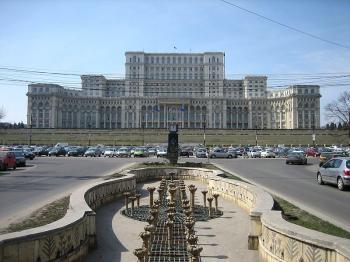In many regions of Romania, folk rituals are performed in order to bring happiness and prosperity to the young couple. These rituals vary from region to region, but one common element is the symbolism in the costumes of the bride and the groom.
In Moldavia, for instance, the wedding traditions are in accordance with the common belief that a person who didn’t manage to build a home, to raise kids, to dig a proper well, and plant a tree has failed in his life. One of the typically Moldavian traditions still kept nowadays is that of showing respect and thanks to the parents by a bowing gesture.
The traditional wedding is rich in adornment and has also strong moral elements. Apart from that the guests are welcomed with wine and fresh colac (special bread) with salt. The party has artists performing traditional dances and singing songs, and is meant to last until daybreak. The menu consists of plenty of delicious food like “sarmale” (Romanian cabbage rolls) and wine. Towards morning, a sour giblet soup or sour pickles is served.
In Maramures, a county in the north of Romania, the wedding has many symbolical values and several stages that are to be followed as such in order to respect the ancient custom. The ceremony is quite simple. The first step is taken when a person of trust from the groom’s family goes to the bride’s house to propose to the girl. The positive answer usually comes after having asked for three times, then the proposer and the girl’s parents talk about the bride’s dowry and decide the date of the engagement ceremony.
The whole walk to the wedding place and the entire ceremony is based on symbolical elements, way of dressing, gestures—a certain order of events that needs to be fully respected.
There is also an emotional part to the whole ceremony, especially during the so-called “forgiving moments,” when the bride and the groom have to ask for forgiveness from the part of their parents, for possible mistakes they’ve made before this special occasion.
These are but a few examples of traditional elements for this sacred ceremonial act. Many are still preserved these days, while others are lost back in history.




